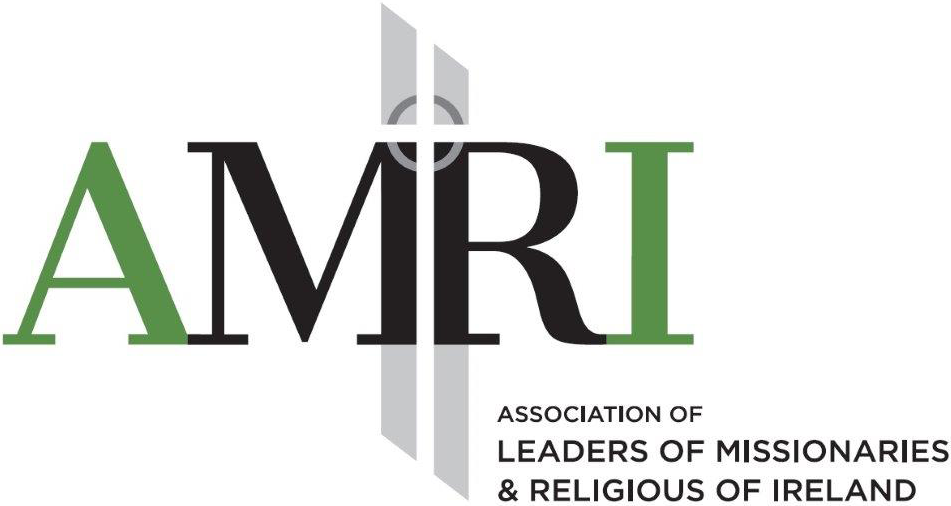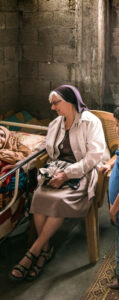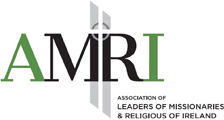While the world watched… and did nothing…
I recently gave a workshop centred on the photographic exhibition Daring to Hope: Irish Religious Sisters Embracing the Unknown (1923-2023), which was being hosted at the venue. The exhibition illustrates the social history of the work of religious sisters across the continents over a 100-year period. It tells the story of the work of women such as Sr Stan who helped to raise the voices of the homeless in Ireland through the charity Focus Ireland. Or of Mother Mary Martin who challenged the Catholic hierarchy for women religious to trailblaze medical responses for women, often where there were none. The exhibition also includes Sr Bridget Tighe who worked for many years among Palestinian refugees and supported critical humanitarian responses, through her work with Caritas in the region.
It was the mention of the ‘war in Gaza’ towards the end of the workshop and the inescapable realities of the rising number of lives lost, that distressed one of the participants in attendance. The issue surrounded the numbers, which he claimed I had overestimated. I had quoted widely used figures of ‘40,000 Palestinian lives lost’ as reported by the health ministry in Gaza – who are on the ground in Gaza. This figure is also quoted by reputable mass media outlets and the UN, who go further, stating that: “On average, about 130 people have been killed every day in Gaza over the past 10 months”. And once the mounds of rubble are finally removed, it is anticipated the ‘numbers’ will be much higher. This of course, is without the devastation and obliteration of people’s homes and the necessary social and economic infrastructure such as schools, hospitals, commercial facilities, road networks, farmlands, etc. And there’s also the issue of the colossal environmental impact of the daily war arsenal that is being dumped into the atmosphere. This morning, I came across an article in the Jewish Voice for Peace titled: A brief guide to Israel’s cultural genocide, which brought home the reality of the conscious destruction of historical and religious sites and centres of culture and learning, such as libraries, archives, museums, etc., many of which are centuries old or more. The Great Omari Mosque for example, dates back 1,400 years and was destroyed last December by an Israeli airstrike. In terms of civilian and military spending, the Governor of the Bank of Israel Amir Yaron, has projected the cost over 2 years (2023-2025) to be a ‘budgetary burden’ of US$67 billion. For those living in Gaza, the United Nations Development Programme report that “The scale of the destruction is huge and unprecedented… a mission that the global community has not dealt with since World War II”. The costs of rebuilding “…the Gaza Strip … could reach up to $40 billion” (UN assistant secretary-general Abdullah Al Dardari). But this is only when the war ends and the discussion on reconstruction can begin.
I find the daily newsfeeds reporting on the violence that continues to unfold in Gaza and the West Bank, soul destroying. I am also numbed by the lack of global outrage. However, my greatest torment is in having to endure individuals who quarrel about numbers of lives lost as though we are gaming and the highest points matter. Each child, woman and man that has lost their life in this senseless war – be they Palestinian, Israeli or other – was a living, breathing human being, just like you and me. And as I reminded the individual at the workshop, each had the right to live in peace and freedom. Just as we do.
After the shock of the crimes committed during the second world war, in particular directed towards the worlds Jewish population, the Universal Declaration of Human Rights, the groundbreaking document written by the newly formed United Nations, was universally agreed in 1948. This document is a blueprint that sets out the fundamental human rights to be universally protected. It states, the “recognition of the inherent dignity and of the equal and inalienable rights of all members of the human family is the foundation of freedom, justice and peace in the world.” It has been translated into 500 languages and all 193 member states of the United Nations have ratified at least one of the nine binding treaties influenced by the Declaration. This means that it is the responsibility of at least 193 countries around the planet to protect human lives across the world. This includes the human rights and dignity of the people of Gaza and the West Bank, who are ‘members of the human family’. The human, social and environmental massacre currently taking across ‘Palestine’ and its surrounds must end. Pope Francis has relentlessly called for a ceasefire in this, and other wars that rage across the world. In commemorating the 10th anniversary of the “Invocation for Peace” he stated that in relation to the Isarale-Hamas war:
“All of us must work and commit ourselves to achieving a lasting peace, where the State of Palestine and the State of Israel can live side by side, breaking down the walls of enmity and hatred…”
When I was undertaking research for my doctoral studies in township in South Africa, a slogan that the men I was working with often used to disassociate themselves from the rising violence against women in the country was, ‘Not in My Name’. History, as is so often demonstrated, will judge our silence and inaction in the face of wars and conflicts that are raging across the world today. And as the men in South Africa taught me, this is not happening ‘in my name’.
How do you want to be judged by history?
Learn more, take action:
- Read a reflection by Sr. Bridget Tighe HERE
- Watch the 2009 documentary Budrus for a greater understanding of the situation in Gaza HERE
- Learn about the humanitarian crisis in Gaza from Concern HERE
- Watch and share the powerful vblogs on Instagram (@medo_halimy) and TikTok (@medohalimy) about daily life in a tented camp in Gaza by a young man called Mohammad ‘Medo’ Halimy. Medo takes us on a tour of the realities of life under attack and the resilience of the Palestinian people. One of his projects was to plant vegetables/plants each day until the war was over. With great sadness, I read yesterday that Medo who was 19 years, had died after being hit by shrapnel during an Israeli airstrike on Gaza’s southern city of Khan Younis on Monday
- Join Trócaire campaign for an end to trade between Ireland and these illegal settlements HERE



